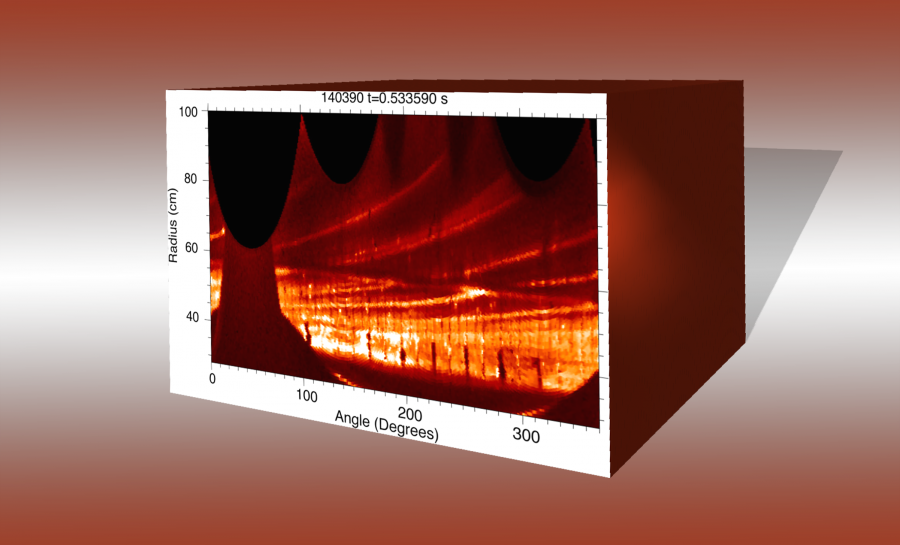May 27 2020
The presence of blobs in plasma needed for fusion reactions could cause great damage. At the edge of fusion plasmas, this bubble-like turbulence tends to swell and drain heat from the edge, affecting the fusion reaction efficiency in “tokamaks”—doughnut-shaped fusion facilities.
 Image showing spiraling magnetic field fluctuations at the edge of the NSTX tokamak. Image Credit: Photo courtesy of Physics of Plasmas. Composition by Elle Starkman/Office of Communications.
Image showing spiraling magnetic field fluctuations at the edge of the NSTX tokamak. Image Credit: Photo courtesy of Physics of Plasmas. Composition by Elle Starkman/Office of Communications.
At the U.S. Department of Energy’s (DOE) Princeton Plasma Physics Laboratory (PPPL), scientists have currently identified a striking link between the blobs and fluctuations in the magnetic field that confines the plasma that fuels the fusion reactions in the device core.
New Aspect of Understanding
Further analyses of this link and its role in the heat loss from magnetic fusion reactors will be very useful to produce the fusion energy that powers the sun and stars on Earth.
These results add a new aspect to our understanding of the plasma edge heat loss in a tokamak. This work also contributes to our understanding of the physics of blobs, which can help to predict the performance of tokamak fusion reactors.
Stewart Zweben, Study Lead Author and Physicist, Princeton Plasma Physics Laboratory
The study has been described in a paper published in Physics of Plasmas and chosen by editors as a featured article.
In fusion reactions light elements in the form of plasma—the hot, charged state of matter made of atomic nuclei and free electrons, making up 99% of the visible universe—are combined to generate enormous amounts of energy. Researchers have been making efforts to produce and control fusion on Earth as a source of clean, safe, and almost limitless power to produce electricity.
Last year, researchers at PPPL found out the surprising link while performing a re-analysis of experiments carried out in 2010 on PPPL’s National Spherical Torus Experiment (NSTX)—the precursor of today’s National Spherical Torus Experiment-Upgrade (NSTX-U). Termed “magnetohydrodynamic (MHD)” activity, the fluctuations and blobs in the magnetic field form in all tokamaks and have conventionally been regarded as independent of each other.
Surprise Clue
The first hint to the link was the stunning regularity of the trajectory of large blobs, which move at approximately the speed of a rifle bullet, in experiments performed in 2015 and 2016. In general, such blobs travel randomly in the so-called “scrape-off layer” at the edge of tokamak plasma. However, in certain cases, all large blobs moved at virtually the same speed and angle.
Furthermore, the period between the emergence of each large blob at the plasma edge was virtually the same always, almost coinciding with the dominant MHD activity frequency at the plasma edge.
Then, the researchers monitored the diagnostic signals of the MHD activity and the blobs with respect to each other to quantify the so-called “cross-correlation coefficient,” which was used to assess a set of NSTX experiments performed in 2010. Approximately 10% of those experiments revealed a significant link between both the variables.
Subsequently, multiple probable causes of the correlation were analyzed. However, no single compelling explanation could be found. According to Zweben, to gain insights into and manipulate this phenomenon, further data analysis and modeling will be required—maybe by readers of the Physics of Plasmas paper.
This study was financially supported by the DOE Office of Science, with a part of the study performed under the auspices of Lawrence Livermore National Laboratory.
Journal Reference:
Zweben, S. J., et al. (2020) MHD-blob correlations in NSTX. Physics of Plasmas. doi.org/10.1063/5.0006515.